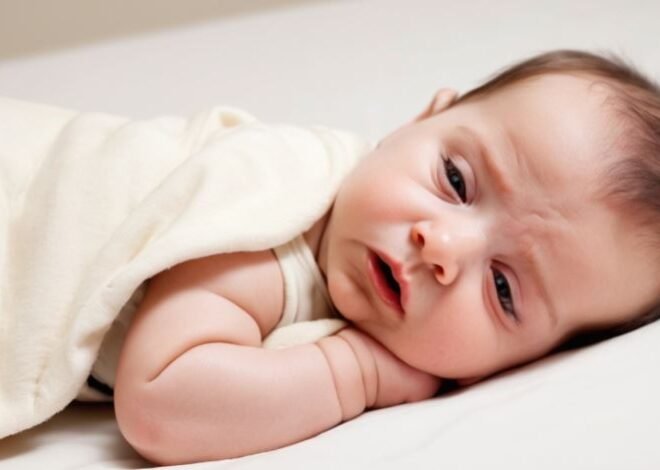
Do you need a crib?
To determine the need for a crib for your baby, it is crucial to consider the timing of your baby’s arrival and the importance of a safe sleeping environment. Ideally, you should analyze this need before your baby is born or during the early stages of infancy.
Planning ahead and having a crib ready before your baby’s arrival is essential for several reasons. First and foremost, a crib provides a dedicated and secure space for your baby to sleep, which is crucial for their safety and well-being. The American Academy of Pediatrics (AAP) recommends that infants should sleep on their own sleep surface, such as a crib, to reduce the risk of Sudden Infant Death Syndrome (SIDS) and sleep-related accidents. By having a crib prepared in advance, you can ensure that your baby has a safe sleeping space from the very beginning.
Preparing a crib early allows you to customize the nursery to meet safety standards and your preferences. You can choose a crib that adheres to the latest safety guidelines, such as having appropriate slat spacing and a firm mattress. Additionally, considering the design and layout of the crib allows you to create a warm and inviting space for your baby, which can contribute to their overall comfort and well-being.
Is a crib necessary?
Whether a crib is necessary depends on various factors, including individual parenting preferences, cultural practices, and safety considerations. While cribs are widely used and recommended by experts, some parents choose alternative sleeping arrangements for their babies.
Cribs offer several benefits that make them a popular choice for providing a safe sleeping environment for infants. They are designed with safety standards in mind, with features such as closely spaced slats to prevent entrapment, a firm mattress to reduce the risk of suffocation, and sturdy construction to ensure stability. Cribs also provide a dedicated space for the baby to sleep, promoting healthy sleep habits and establishing a bedtime routine.
some parents opt for alternatives like co-sleeping or bassinets for their newborns. Co-sleeping, when done safely and with proper precautions, can create a strong parent-child bond and facilitate breastfeeding during the night. Bassinets, on the other hand, offer a smaller and more portable sleeping option that can be placed near the parents’ bed for easy access to the baby.
Ultimately, the decision on whether a crib is necessary depends on the parents’ comfort level, cultural practices, and adherence to safety guidelines. If choosing an alternative to a crib, it is essential to prioritize safety and ensure that the sleeping arrangement provides a secure environment for the baby. Consultation with pediatricians and experts in safe sleeping practices can help parents make informed decisions that best suit their family’s needs and values.
Is a crib necessary for a newborn?
Yes, a crib is generally considered necessary for a newborn. Providing a crib for your newborn offers numerous advantages, including safety, comfort, and the promotion of healthy sleep habits.
Safety is of utmost importance for newborns, and cribs are designed with safety standards in mind. They provide a secure and enclosed sleeping space, reducing the risk of accidental suffocation or injury. The slats on the crib sides are spaced to prevent the baby from getting trapped, and the crib mattress is firm to minimize the risk of suffocation. By following the American Academy of Pediatrics (AAP) guidelines for safe sleep, which recommend placing babies on their backs in a crib, the risk of Sudden Infant Death Syndrome (SIDS) can be reduced significantly.
Comfort is another crucial aspect when considering a crib for a newborn. Cribs offer a comfortable and dedicated sleeping space for your baby, allowing them to rest peacefully without being disturbed by other activities in the room. This consistent sleep environment can promote healthy sleep patterns and contribute to the baby’s overall well-being.
using a crib from the beginning helps establish a bedtime routine and promotes independent sleep habits as the baby grows. A consistent sleep space can signal to the baby that it’s time to rest, helping them establish a healthy sleep schedule over time.
When to buy a crib during pregnancy?
The ideal time to buy a crib during pregnancy is in the second trimester or around the 20-week mark. Shopping for a crib during this period allows you enough time to research, compare options, and make an informed decision without feeling rushed or stressed. It also ensures that the crib is ready and set up well before the baby’s arrival, giving you ample time to prepare the nursery and create a comfortable environment for your little one.
Buying a crib early in the second trimester has several advantages. Firstly, it allows you to thoroughly research different crib models, safety features, and brands. This research ensures that you select a crib that adheres to the latest safety guidelines, such as having appropriate slat spacing and a firm mattress. It also allows you to find a crib that suits your style and budget preferences.
Furthermore, purchasing a crib during the second trimester allows you to take advantage of sales, discounts, and seasonal offers that retailers may have. This can potentially save you money while still providing your baby with a safe and high-quality crib. Additionally, buying the crib early gives you sufficient time to assemble it, inspect it for any defects, and address any issues that may arise, ensuring that it is ready for your baby’s use.
Are there any potential hazards I should be aware of when using a crib?

Yes, there are potential hazards associated with using a crib that parents should be aware of to ensure the safety of their baby.
- SIDS and Sleep-Related Accidents
- Improper Assembly
- Slats and Slat Spacing
- Teething Rails
- Mobiles and Toys
- Height Adjustment
- Recalls and Safety Standards
SIDS and Sleep-Related Accidents:
To reduce the risk of SIDS, always place your baby on their back to sleep in the crib. Use a firm mattress with a snug-fitting crib sheet and avoid soft bedding, blankets, or stuffed animals that could pose suffocation hazards.
Improper Assembly:
Follow the manufacturer’s instructions carefully when assembling the crib. Double-check that all necessary hardware is securely in place to ensure a stable and safe crib.
Slats and Slat Spacing:
Check the spacing between crib slats to ensure they are no wider than 2.3 inches (approximately the width of a soda can). This prevents entrapment hazards and ensures the baby’s safety.
Teething Rails:
If the crib has teething rails, ensure they are made of non-toxic materials and firmly attached to prevent any risk of ingestion or injury.
Mobiles and Toys:
Securely attach mobiles and toys to the crib, ensuring they are out of the baby’s reach to prevent choking or strangulation hazards.
Height Adjustment:
As the baby grows and becomes more mobile, lower the crib’s mattress to the lowest position to prevent climbing and falling risks.
Recalls and Safety Standards:
Stay informed about any crib recalls and ensure the crib meets current safety standards. Regularly check for safety certifications to ensure the crib’s safety.
By addressing each of these factors and taking necessary precautions, you can create a safe and secure sleep environment for your baby in the crib. Remember to prioritize safety and follow guidelines from reputable organizations to reduce potential hazards and promote the well-being of your little one.



